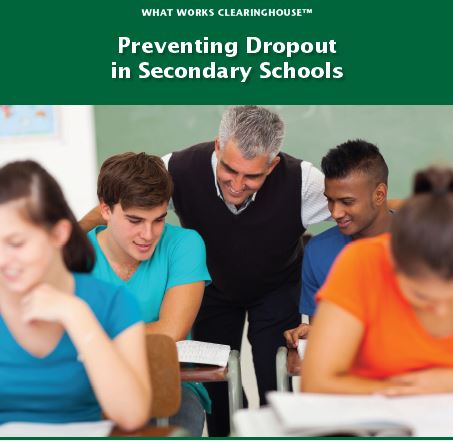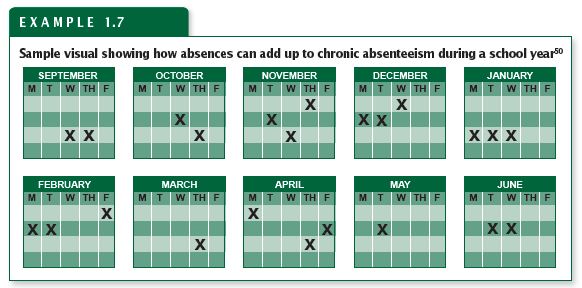By Dana Tofig, Communications Director, IES

Almost a decade ago, the What Works Clearinghouse (WWC) released Dropout Prevention, one of its first practice guides, which offered six recommendations for keeping students in school, based on the findings from high-quality research and best practices in the field. Since its release in August 2008, the practice guide has been downloaded thousands of times by practitioners across the country. In fact, the guide was downloaded more than 1,500 times in 2016, alone.
However, over the past decade, the research and knowledge base has grown in the area of dropout prevention, which is why the WWC decided to update this guide to reflect the latest evidence and information about keeping students in school and on track toward graduation.
This updated guide, Preventing Dropout in Secondary Schools, builds on the 2008 guide in two significant ways.
First, it reflects improvements in practices related to monitoring at-risk students, including advances in using early warning indicators to identify students at risk for dropping out. Secondly, it covers an additional nine years of research that were not a part of the previous guide. In fact, 15 of the 25 studies used to support the recommendations in this updated guide were published after the first guide was published. In addition, studies from the previous guide were reviewed again against current, more rigorous WWC evidence standards.
Preventing Dropout in Secondary Schools offers four evidence-based recommendations that can be used by schools and districts:
- Monitor the progress of all students, and proactively intervene when students show early signs of attendance, behavior, or academic problems;
- Provide intensive, individualized support to students who have fallen off track and face significant challenges to success;
- Engage students by offering curricula and programs that connect schoolwork with college and career success and that improve students’ capacity to manage challenges in and out of school; and
- For schools with many at-risk students, create small, personalized communities to facilitate monitoring and support.

Each of these recommendations includes specific strategies for implementation and examples of how this work is being done around the country (see one such example in the image to the right).
Like all of our practice guides, the recommendations were developed with a panel of educators, academics, and experts who brought a wealth of knowledge and experience to the process. Two of the panelists on this updated guide were also involved in the development of the first dropout prevention guide—Russell Rumberger, from University of California, Santa Barbara, and Mark Dynarksi, of Pemberton Research LLC. The other panelists for the new guide were Howard (Sandy) Addis, of the National Dropout Prevention Center and Network; Elaine Allensworth, from the University of Chicago; Robert Balfanz, from The Johns Hopkins University; and Debra Duardo, superintendent of the Los Angeles County Office of Education.
Please download this free guide today and let us know what you think. We would especially love to hear from people who are using the recommended strategies in schools. You can reach us through the WWC Help Desk or email us at Contact.IES@ed.gov.